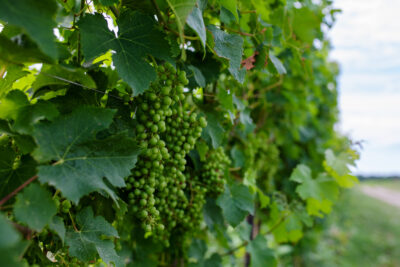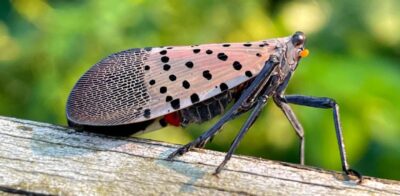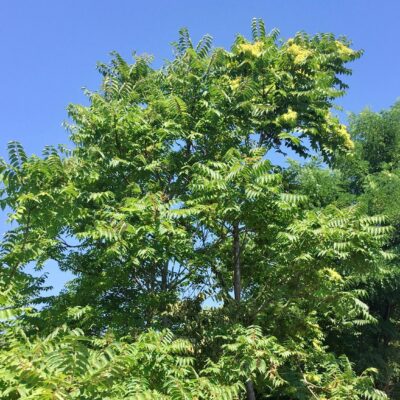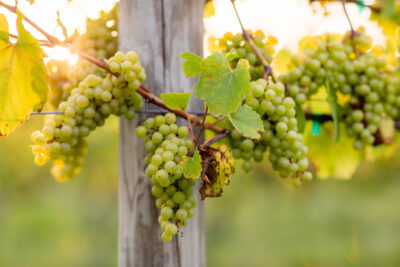 Growing grapes isn’t for the faint of heart. A delicate crop utterly dependent on the whims of Mother Nature, the challenges have always been significant, but in recent years amid climate change, the situation has felt, at times, existential.
Growing grapes isn’t for the faint of heart. A delicate crop utterly dependent on the whims of Mother Nature, the challenges have always been significant, but in recent years amid climate change, the situation has felt, at times, existential.
This past year’s harvest was summarized in Cornell’s documentary-style newsletter Veraison to Harvest 2023 thusly: “Spring was early, fall was late and summer was difficult.”
It continued: “The abrupt changes in weather patterns, crop estimates, and general vibes only added to the emotional toll, though. Like a movie with too many plot twists or a team that can only play overtime games, this year put the grapes and the growers through more than seemed necessary.”
Sigh. How much whisky does a grower need to grow grapes?
Well, if researchers have their way, a lot less in the coming years. Two scientists share insight into their work combating pests and pestilence in the vineyards.
Reducing Risk of Spotted Lanternfly
 The invasive spotted lanternfly poses a significant threat to New York’s $15 billion wine industry, not to mention agriculture and tourism more broadly. The large planthopper originally came here from Asia and has been spreading across the eastern seaboard, with a significant infestation already decimating vineyards in Pennsylvania.
The invasive spotted lanternfly poses a significant threat to New York’s $15 billion wine industry, not to mention agriculture and tourism more broadly. The large planthopper originally came here from Asia and has been spreading across the eastern seaboard, with a significant infestation already decimating vineyards in Pennsylvania.
The lanternfly feeds on vines, which weakens them and reduces their ability to survive the winter, return to bloom, and produce a healthy crop. In severe cases of infestation, spotted lanternfly can even kill the vines they feed on.
Greg Loeb, PhD, professor at the Department of Entomology at Cornell AgriTech, considers the lanternfly to be a formidable adversary, but one that can be controlled and managed with the right tools. When they’re feeding, the lanternfly can also excrete sugary material that causes mold to develop on the grapes.
“We are seeing them in the Hudson Valley, south of Rochester, and in Buffalo and Syracuse,” Loeb says. “We don’t expect them to seriously impact wine-growing areas beyond the Hudson Valley for a few years, and possibly never if we can keep them under control.”
Loeb has been working on a research project that he believes may help hamper the invasion with Hans Walter-Peterson, viticulture extension specialty at Cornell Cooperative Extension. It involves using a tree called the Tree of Heaven, which the lanternfly also targets, as a lure to redirect the invasive, destructive insects away from vineyards.
 “The Tree of Heaven is also an invasive species, and we’ve found that the spotted lanternfly feeds on them,” Loeb says. “We are finding that we can use Tree of Heaven as a trap tree.”
“The Tree of Heaven is also an invasive species, and we’ve found that the spotted lanternfly feeds on them,” Loeb says. “We are finding that we can use Tree of Heaven as a trap tree.”
By attracting large numbers of spotted lanternflies to pods of trees and then systematically putting insecticide on those trees, it can eliminate large swaths of the swarming insect at once.
Loeb explains that in addition to creating traps, they are working on increasing awareness of the threat of the lanternfly among grape growers, while also giving them the tools to use Tree of Heaven traps to combat the spread.
“Early identification is key,” Loeb says. “We are also working with the Department of Agriculture on educating the public.”
There are also other potential tools Loeb and his colleagues are considering.
“There are wasps that attack eggs of spotted lanternflies, but they may also attack the eggs of other insects,” he says. “The USDA has an entire sector devoted to biological control because there is a lot of risk and benefit associated with introducing a new species to an area to take care of a problem created by another species. We would have to ensure it is safe for other insects, and we are not even close to that at this stage.”
Suppressing Mildew
Climate change is increasing the incidence of many plant pathogens and diseases, including powdery mildew. Studies have shown that elevated CO2 and temperature levels increase the severity of powdery mildew, and while the economic impact on the table and winegrape industry varies year to year, it is clearly harming both the size and quality of the harvest.
 Bryan Hed, research technologist at PennState’s College of Agricultural Sciences, has been working on projects to establish which fungicides are most effective against mildew, and how often they should be deployed for the best outcomes. Hed’s focus, he explains, has been on Concord grape growers, but he sees the work as applicable, and indeed essential, to every kind of grape grower.
Bryan Hed, research technologist at PennState’s College of Agricultural Sciences, has been working on projects to establish which fungicides are most effective against mildew, and how often they should be deployed for the best outcomes. Hed’s focus, he explains, has been on Concord grape growers, but he sees the work as applicable, and indeed essential, to every kind of grape grower.
“If we can get growers across the board to use the most effective method of control, we reduce the incidence of powdery mildew across the grape belt,” Hed says, adding that there are about 22,000 acres of grapes under vine in New York alone, and 32,000 across Pennsylvania, New York and Ohio put together. “That will then reduce the threat of outbreaks in the future, because spores are easily carried by winds to other vineyards, even ones that are hundreds of miles away.”
Building on decades of research, Hed and his colleagues experimented with different fungicide materials and spray intervals, and found that spraying every 10-14 days with newer fungicides (Ceyva, Gatten and Endura) increased the quality and size of harvests.
But findings that aren’t shared with others are useless, Hed says.
“We knew we needed to get the word out for the findings to have an effect,” he explains.
So they presented their data to growers in Lake Erie Regional Grape Program newsletters, industry zooms, the Lake Erie Regional Grape Program Conference, and during coffee pot meetings and crop updates.
Proceeding with a combination of caution and derring-do, Loeb, Hed, and their cohorts are doing everything they can to make sure the grape-growing cycle in New York is healthier and more bountiful.

